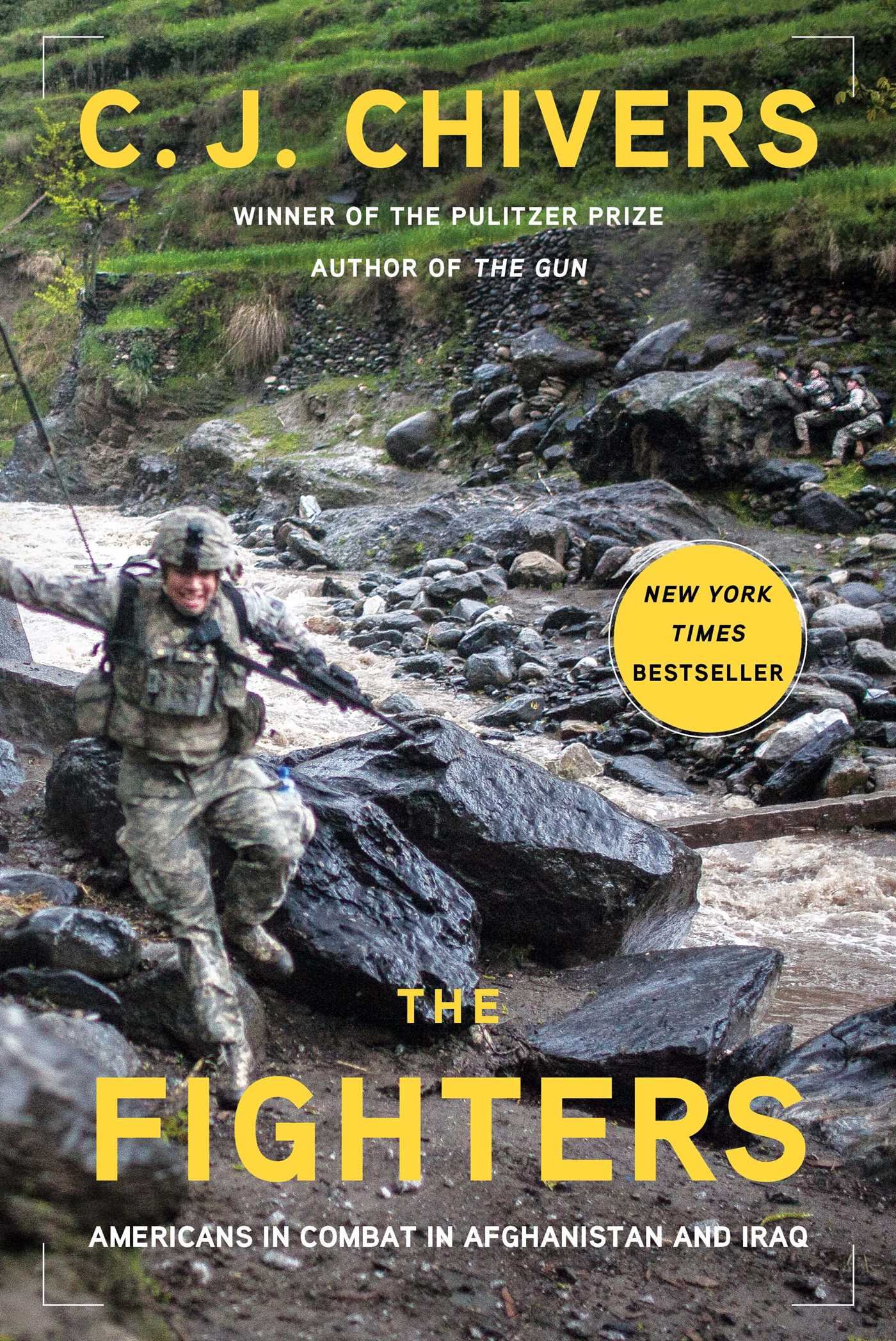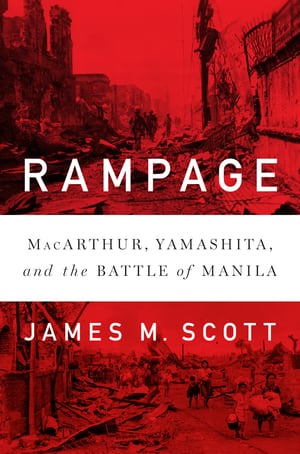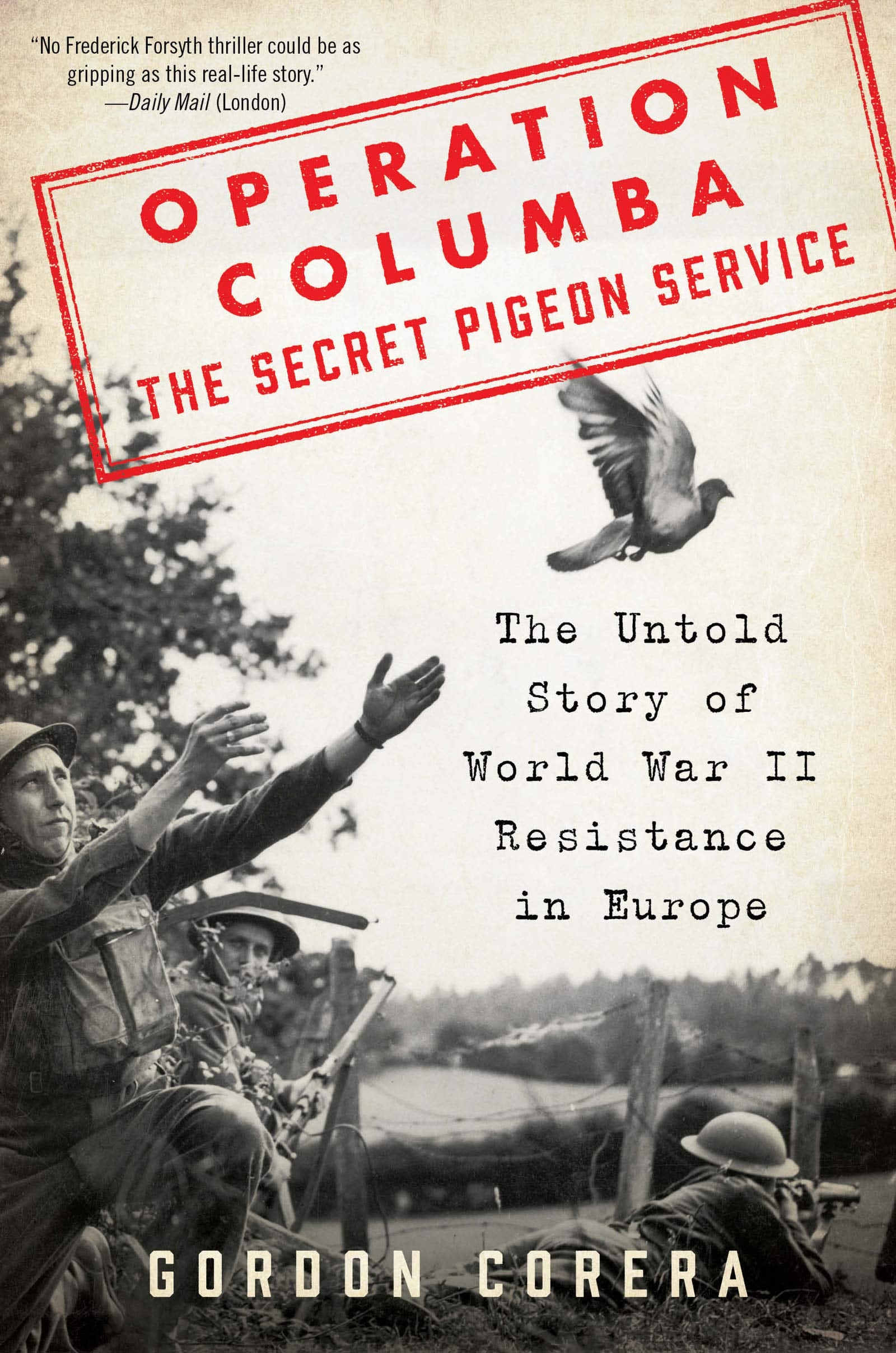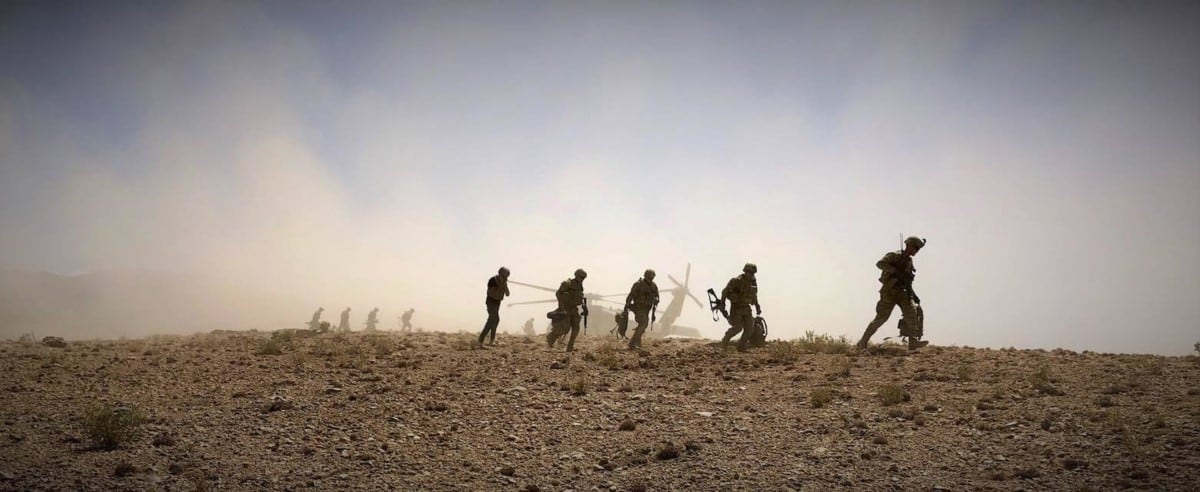A respected journalist and former Marine says the Pentagon makes war look like a bad idea. A published scholar rates the commanders in chief at war, and you’ll learn who scores well.
An historian depicts nearly unreadable crimes by Japanese troops in Manila. An Army veteran writes a memoir — before he drops out of a political race. And an Iraq-and-Afghanistan soldier’s memoir relies on illustrations.
Here is Military Times’ fall roundup of book reviews, listed in order of reading value and satisfaction. Prices are provided by the publishers.
Click here for our fall military fiction reviews.

The Fighters: Americans in Combat in Afghanistan and Iraq by C.J. Chivers, Simon & Schuster, 400 pages, $28.
In “The Gun” (2010), Chivers reassembles the AK-47 by focusing on the weapon’s predecessors and makers, making the narrative less mechanical and more human. If guns don’t kill people, inventors do. In his second book, The New York Times journalist spans 17 years with stories from six fighters’ active duty, reporting on people and not the policy.
If wars don’t kill people, “operationally incoherent” commands do.
Chivers, who was a Marine captain during the Persian Gulf War, “covers these combatants with a simple organizing idea: that they are human” — and in this report, they are only male.
Nevertheless, this is a must-read for anyone trying to understand how, where and why we fight, when “across three presidential administrations” the Pentagon manages “again and again, to make war look like a bad idea.”
Chivers’ good idea results in exceptional storytelling, a mix of contemporary history and journalistic drama.
“War can drive the wounded to all manner of conclusions,” and half dozen fighters tell theirs.
Among them, Army Sgt. 1st Class Leo Kryszewski, who, after “18 years in the Army, he survives his first gunfight.” A year later, shrapnel penetrates “his back, his buttocks, and his face.” Alone in the hospital, he hates “being away from a team.”
And Marine 1st Lt. Jarrod Neff, who hears he will “participate in the largest Marine helicopter assault since Vietnam” at a place with “an imposing aura. Marjah, the briefings said, was an impregnable no-go zone,” and its “fall would augur a turning point in the war and fill new chapters in Marine Corps lore.”
Presidents of War by Michael Beschloss, Crown, 752 pages, $35.
Only one of Beschloss’ nine presidents opts out of war, but eight is enough for the historian.
They take “the American people into major wars roughly once in every generation,” he notes, and his ninth book delineates “important qualities of leadership that Americans should demand when they choose a candidate for that office.”
Read this before you vote in 2020.
The book succeeds despite length (148 pages of notes) and heft. At two and a half pounds, the book is still half a pound lighter than last fall’s massive “Grant” by Ron Chernow – and, fortunately, has fewer adjectives. The only bad thing about this captivating study is that you want to know more about current predicaments. As is, the book should be on enlisted and officer reading lists.
With delectable details, Beschloss reports with a scholar’s training and a writer’s style about personalities, policies and politics in back rooms rather than battlefronts.
He starts with Thomas Jefferson and James Madison and works his way up to Lyndon Johnson and George W. Bush.
However, Beschloss only mentions Bush, a seeming and disappointing omission.
Why just a touch of Bush, Afghanistan, and Iraq? History and Beschloss need more time, and he writes only with “much historical hindsight and access to primary sources.”
May “Presidents at War, Part 2” be next.

Rampage: MacArthur, Yamashita, and the Battle of Manila by James M. Scott, Norton, 640 pages, $33.
This is not just another recounting of two opposing generals’ military tactics during World War II. Despite the vague (“rampage”?) and stuffy title, the narrative is engrossing — although the subject matter is occasionally repellant.
What this summer’s bestselling “Indianapolis” (reviewed in Military Times in June) does for the ship’s sailors, “Rampage” does for the people in the city known as the Pearl of the Orient — until its devastation in 1945. Both books emphasize the Pacific war’s devastation to individuals. The Navy faces starvation, salt water and sharks (in the branch itself and in the sea), and the Manilans face the Japanese.
“The enemy went berserk in the face of defeat,” says a witness, but “berserk” seems benign when “the retreating Japanese had left a trail of massacres for the Americans to follow, like macabre breadcrumbs. Often lured by the rancid smell of the dead … troops cautiously entered the ruins … to discover hundreds of men, women, and children, slain by gunfire, bayonets and swords.”
Scott gives civilians the recognition they deserve, the generals get their dessert. Tomoyuki Yamashita, who knows the end is near, “initially mistook the American convoys for a much-needed resupply for his own forces.
‘We expected rice,’ his chief of staff said. ‘We got the American Army instead’.”
Gen. Douglas MacArthur preens while Manila burns. For one thing, his team doesn’t meet his standards.
“I don’t see how,” he says, “I have gotten as far as I have with the staff I have been surrounded with.”
Eager to make his “I shall return” remark come true and to find “his wardrobe of 218 silk and linen handkerchiefs,” he left in Manila in 1942, and MacArthur declares victory early — “in stark contrast to actual events on the ground. … The Battle of Manila, in fact, had not even truly begun.”
Nor will the “gruesome” battle ever end — for survivors and, now, for readers.
“It’s difficult to comprehend or even believe humans are capable of such barbarity,” says Scott, whose research is proof and whose narrative is enthralling.
We’re Doomed. Now What? Essays on War and Climate Change by Roy Scranton, SoHo, 360 pages, $17.
If war doesn’t get you, the climate will. So, what’s a reader to do?
You broke it. Fix it. Scranton, the Army veteran whose two previous books (one is the provocatively titled “War Porn” novel) are on Military Times’ “best” lists of 2015 and 2017, provides no easy repair guide.
“I’m a novelist and sometime journalist and an essayist,” he explains. “What can mere words do for a doomed civilization?”
But what good is thinking alone in your room, to paraphrase a line from “Cabaret.” Come fear the hubris’ sway — as you read all about it.
His conviction and consternation about ecology and society might propel you to act. It is “reasonable to say that the challenge we live with today is the greatest the human species has ever faced.”
And his verbal skill can expand your vocabulary. When do you use “ouroborosian” in a sentence?
The 11 essays (from 2010 – 2017) expand on his eloquent “Learning to Die in the Anthropocene: Reflections on the End of a Civilization,” the 2015 “best” title. The essays specifically about Iraq, “Back to Baghdad” and “The Trauma Hero,” are especially meaningful.
“To be honest, those brutal, maddening days in Baghdad in the summer of 2003, when I thought every morning I was going to die, were some of the sweetest and purest of my life. Each moment gleamed with transcendent splendor.”

Outside the Wire: 10 Lessons I’ve Learned in Everyday Courage by Jason Kander, Twelve, 256 pages, $28.
Publicity materials note the author’s “star” quality in politics, and in July — three weeks before publication of this book — he announced his candidacy for Kansas City mayor. But in early October, he opted out of the race, citing his need to take time off “after 11 years of trying to outrun depression and PTSD.”
In the book, he offers no bravado about his four-month deployment in Afghanistan. If readers want “a bunch of war stories, then you’ll be disappointed,” he writes. “I knew a ton of people in the Army who did more than me,” and he acknowledges “survivor’s guilt.”
Given the genial mood of his memoir-manifesto, he probably could easily make a living as a TV host or standup comedian if he ever gives up on politics. Did he inherit his performance ease from his great-uncle John, the composer of “Chicago” and “Cabaret”?
With candor, Kander goes from Kansas City to Kabul to Officer Candidate School instructor to courting voters, sometimes all in the same chapter. Each presents life lessons — “hustle and be humble” and “be willing to fail … publicly.”
He employs frequent footnotes as asides, including a standing joke about “Citizen Kane,” the 1941 movie. He makes his successes seem ordinary — including his founding Let America Vote — and “proudly” notes his “F” rating from the NRA.
“I’m not one who feels ‘political correctness run amok’ is an actual problem in America. I see nothing wrong with all of us trying to be decent to one another,” he writes.

City of Death: Humanitarian Warriors in the Battle of Mosul by Ephraim Mattos with Scott McEwen, Center Street, 304 pages, $25.
Another memoir by another SEAL?
Not really.
“I do not consider myself a hero, nor am I seeking recognition for my time as a SEAL,” Mattos clarifies at the start of the book written with McEwen, a co-writer of “American Sniper.”
Growing up in a fundamentalist Christian home, Ephraim (his brother’s name is Zebulun) wants to join the military, which is not a favored choice.
“We don’t need more Navy SEALs in the world,” the preacher exclaims in the school chapel. “We need more preachers!”
Mattos becomes both — and perhaps unknowingly follows the adage that the best preachers are the silent ones. After the Navy, he volunteers with the Free Burma Rangers, humanitarians headed by former Army special-forces officer David Eubank, in order to “use my military skills and experience to help others.”
Two and a half years “since I’d fired a weapon in battle,” he is “an armed civilian in an ambulance on the Nineveh Plains.” Inside a “bullet-riddled house in West Mosul,” his fellow Rangers include Burmese guerrilla medics, Texas missionaries, a retired Marine and his wife from Georgia, a British filmmaker, U.S. Mennonites and a French journalist.
“The absurdity was never lost on any of us.”
Nor is their purpose, which is to provide medical aid and to document abuses.
“We will not be led by fear or comfort,” Eubank says, “and we will always stand with the people who everyone else has written off.”
Charlie Company’s Journey Home: The Boys of ’67 and the War They Left Behind by Andrew Wiest, Osprey, 400 pages, $28.
On the jacket there’s another title line, one that narrows the subject: “The Forgotten Impact of Vietnam on the Wives and the Families of Veterans.” That’s the reason for this follow-up to the Vietnam War historian’s “The Boys of ’67,” the 2012 book that became National Geographic’s 2014 documentary, “Brothers in War.”
At a 2014 wake for one of the men — “Charlie Company was almost entirely made up of draftees” — widow Nancy Benedick tells the author that “nobody has ever told our story.”
Her statement is a revelation to him: “The Vietnam War was the unrelenting force that had crafted the landscapes of these women’s adult lives.”
Their reminiscences unfold, along with Wiest’s perspectives, in an oral-history style.
“When I spoke to these women, they had been alone for so long and their experiences had been invisible for so long, that they were sure they didn’t have a story to tell.”
They do. Collecting their and their husbands’ voices is commendable.

Ghost Riders: When U.S. and German Soldiers Fought Together to Save the World’s Most Beautiful Horses in the Last Days of World War II by Mark Felton, Da Capo, 320 pages, $27.
The “world’s most famous horse training academy” is “considered one of the preeminent symbols of Austria,” a cultural icon in a city whose Nazi head sends 65,000 Viennese Jews to concentration camps as “a contribution to European culture.”
But after six years of war, millions of Europeans are dead. German cities are practically destroyed. And hidden in a Czechoslovakian village are 219 of the Spanish Riding School’s Lipizzaner mares — “several still in foal” — and 400 other horses Aryans considered purely bred. (“Spanish” is in the name because of the breed’s origins.)
But the Soviet Red Army is approaching the stables that will be theirs at war’s end, and an Austrian in the German Army believes the stallions will be horsemeat for starving Russian troops. He persuades Americans to bring the horses to safety to what will be behind American lines — 18 miles away.
The U.S. soldiers, commanded by Virginia equestrian Col. Charles Reed in 1945, are “light on men, light on intelligence regarding route and enemy strengths and intentions, and . . . light on armor and firepower. ”
Poles, friendly Germans, Austrians and Cossacks join the ride, constituting “one of only two occasions during the Second World War when American and German soldiers fought side-by-side.”
Their journey makes you want to watch “Miracle of the White Stallions,” the movie released only 18 years after the event. Reed has a role.

Operation Columba – The Secret Pigeon Service: The Untold Story of World War II Resistance in Europe by Gordon Corera, Morrow, 336 pages, $29.
It’s easy to regard this history as one for the birds, but Corera assures otherwise.
“Pigeons did not win the war,” he writes. “People did.”
Volunteers, including sports birders, did much of the groundwork.
The plan by British agents to rely on clandestine messages that are pigeon-towed has successes, as does the BBC correspondent’s tale. In three years, 16,554 pigeons are “dropped in an arc from Copenhagen in Denmark to Bordeaux in the south of France.”
The idea takes flight in North America also. At its peak, the U.S. pigeon corps has 3,000 men, 150 officers and 54,000 pigeons.
Dreams of My Comrades: The Story of MM1C Murray Jacobs by Scott Zuckerman, M.D., Sunbury, 298 pages, $20.
The story of one Seabee’s experiences before, during and after World War II could benefit from polished packaging and sharper editing, but it is a fascinating study of how war can warp a mind.
A pediatrician convinces a 98-year-old Navy veteran in Utah to describe his being part of the “greatest” generation. Jacobs — not his real name — suffers from post-traumatic stress, and, in interviews, evidently verbatim here, he admits committing atrocities. Zuckerman determines the details do not match official reports.
The doctor-author’s sympathetic intention turns into savvy skepticism, challenging him to determine whether the sailor is telling the truth. In the process, readers will recall William Faulkner’s saying that “memory believes before knowing remembers,” and Jacobs’ pain sadly proves the point.
After Combat: True War Stories from Iraq and Afghanistan by Marian Eide and Michael Gibler, Potomac, 280 pages, $30.
An Army veteran and an English professor spend four years allowing “some 30” veterans to talk between 45 minutes and two hours about their experiences. In the process, the pair sees the “import of anonymity,” the value of allowing the men and five women to speak “with the promise of confidentiality.”
The anonymity might help an interviewee but not a reader’s comprehension or appetite. Consider the collection of voices a help-yourself chow line. The book “is not necessarily designed to be read in an orderly fashion.”
But structure is not the issue. There are no subject headers on individual recollections, and the stories provide little context. If the speaker mentions no location, you decide whether he or she is in Mosul or Kabul — or whether location matters — no matter the segment’s length. Lengthier ones would be more readable with simple fixes such as more paragraph indents. For added meaning and credibility, each can use a garnish of context from the editors’ plates.
The Philosophy of War Films edited by David LaRocca, Kentucky, 538 pages, $30.
Moviegoers who want to find meaning in their motion pictures — reverently called “films” in this collection — might enjoy surfing through the 15 scholarly essays.
“War films are at once artifacts that embody the struggle to account for war and a reflection of the ongoing effort to create stories about admittedly convoluted phenomena,” the editor says.
Most of the movies are familiar, including Kathryn Bigelow’s “The Hurt Locker” and “Zero Dark Thirty,” Terrence Malick’s “The Thin Red Line,” Francis Ford Coppola’s “Apocalypse Now” and Stanley Kubrick’s “Full Metal Jacket.” Paul Haggis’ lesser-known “In the Valley of Elah” gets due respect, as does Charlie Chaplin’s “Shoulder Arms” — 100 years after its release.
When the Killer Man Comes: Eliminating Terrorists as a Special Operations Sniper by Paul Martinez with George Galdorisi, St. Martin’s, 304 pages, $27.
A retired staff sergeant and co-writer take you “to the hell that was Afghanistan in 2011” in a combat memoir from the view of a sniper, a topic some publishers can’t get enough of. This sniper loves “the exhilarating duty to watch over these bloody-handed heroes,” his fellow Rangers.
“One of the things that attracted me to become a Ranger sniper was that our craft is part science and part art.”
In Defense of Andrew Jackson by Bradley J. Birzer, Regnery, 175 pages, $27.
The defense rests quickly in this “biographical essay” about the nation’s seventh commander in chief.
“Forced to rank the U.S. presidents in terms of character, honesty, and effectiveness (regardless of political positions),” the Hillsdale College professor ranks him “number four, after Washington, Lincoln, and Reagan, respectively.”
Jackson “is famous, or notorious” for “fighting and displacing Indians from the American frontier,” but he “was not the Indian hater of leftist myth.” He “was in no way a racist,” although Birzer admits Jackson believed “Indian civilization lagged behind” — a belief you could call racism.
“If Jackson has become unfashionable, it is not because we have outgrown his virtues, but because we have need of them,” and he cites the current president’s praising of Old Hickory for acting “with courage, with grit, and with patriotic heart. And, by the way,” continues President Trump, “he was one of our great presidents.”
Want more? These books are noted but not reviewed.
African American Officers in Liberia: A Pestiferous Rotation, 1910-1942 by Brian G. Shellum, Potomac, 306 pages, $22
A retired Army officer looks at “a monumental piece of missing American history”: Why 17 black officers were “instruments of imperialism” while training forces in West Africa. How’d it go? “Pestiferous” is a clue.
Valley Forge by Bob Drury and Tom Clavin, Simon & Schuster, 432 pages, $30.
This story of “an underdog United States toppling an empire” notes George Washington’s political prowess in fighting both the British and the critics in Congress.
War Animals: The Unsung Heroes of World War II by Robin Hutton, Regnery, 466 pages, $30.
With the release of this “heart-warming” history, the “dogs, horses, mules, pigeons — and even one cat” who served in the fight against Germany and Japan are no longer unsung.
Day of the Rangers: The Battle of Mogadishu 25 Years On by Leigh Neville, Osprey, 352 pages, $30.
The Australian military writer carefully revisits and documents what happens in Somalia October 1993 and, in an appendix, what happens in the 2001 movie that didn’t really happen in real life.
A Fierce Glory: Antietam — the Desperate Battle That Saved Lincoln and Doomed Slavery by Justin Martin, Da Capo, 336 pages, $28.
The biographer of Frederick Olmsted, Walt Whitman and Alan Greenspan turns to Sept. 17, 1862, and the fight beside a creek near Sharpsburg, Md., where 3,654 soldiers die on “America’s bloodiest day.”
Fallout: Conspiracy, Cover-Up and the Making of the Atomic Bomb by Peter Watson, PublicAffairs, 432 pages, $28.
The journalist and historian says “a series of lies, pretenses and deceptions between the Allies resulted in the most dangerous killing machine in history.”
The Escape Artists: A Band of Daredevil Pilots and the Greatest Prison Break of the Great War by Neal Bascomb, Houghton, 336 pages, $28.
British prisoners want to break out of Holzminden, “a land-locked Alcatraz” run by a German commandant who doesn’t want anybody to leave the place alive. At the end of the book is a list of escapees — and the “recaptured.”
Never in Finer Company: The Men of the Great War’s Lost Battalion by Edward G. Lengel, Da Capo, 368 pages, $28.
Devastation and survival in the Argonne forest in World War I . The focus is on three soldiers (Maj. Charles Whittlesey, Capt. George McMurtry and Sgt. Alvin York) and a journalist (Damon Runyan).
Reckless: Henry Kissinger and the Tragedy of Vietnam by Robert K. Brigham, Public Affairs, 320 pages, $28.
“Personal political rivalries and strategic confusion” drive the secretary of state. Based on “recently released material” from the Nixon Presidential Library, Kissinger’s papers at Yale, and archives in Ho Chi Minh City.
The Returned: They Left to Wage Jihad, Now They’re Back by David Thomson, translated by Gregory Flanders, Polity, 240 pages, $20.
The French journalist interviews men and women who went to Syria to join jihadist groups, and he analyzes the “social, religious, political, familial and psychological factors that push people to violent extremism.”
Operation Kinetic: Stabilizing Kosovo by Sean M. Mahoney, Potomac, 512 pages, $39.
The Royal Military College of Canada historian and author of books about Afghanistan and nuclear weapons turns to NATO’s Kosovo Force to “provide a blueprint for stabilizing operations around the world.”
Sword and Scimitar: 14 Centuries of War Between Islam and the West by Raymond Ibrahim, Da Capo, 352 pages, $28.
The most recent of the eight battles in this survey occurs in 1683. The current war between the religious states, including the Islamic State one, is nothing new, and the West ought to remember that.
Tin Can Titans: The Heroic Men and Ships of World War II’s Most Decorated Navy Destroyer Squadron by John Wukovits, Da Capo, 352 pages, $19.
The 2017 book is the recipient of the year’s Samuel Eliot Morison Award for Naval Literature.





